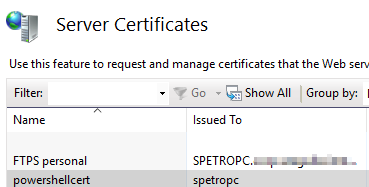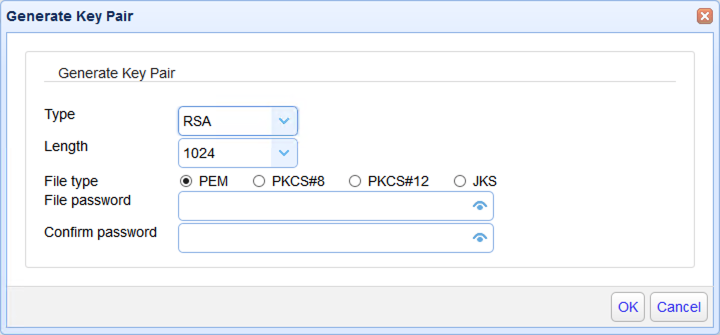
- #TEXTWRANGLER SFTP PRIVATE KEY HOW TO#
- #TEXTWRANGLER SFTP PRIVATE KEY UPGRADE#
- #TEXTWRANGLER SFTP PRIVATE KEY PASSWORD#
- #TEXTWRANGLER SFTP PRIVATE KEY DOWNLOAD#
- #TEXTWRANGLER SFTP PRIVATE KEY MAC#
To enable SFTP support, call the Set-AzStorageAccount command and set the -EnableSftp parameter to true. To add local users, see the next section. If no local users appear in the SFTP configuration page, you'll need to add at least one of them. NET references, see Local Users and LocalUser Class. To view an Azure Resource Manager template that enables SFTP support as part of creating the account, see Create an Azure Storage Account and Blob Container accessible using SFTP protocol on Azure.
#TEXTWRANGLER SFTP PRIVATE KEY HOW TO#
This section shows you how to enable SFTP support for an existing storage account. If you're connecting from an on-premises network, make sure that your client allows outgoing communication through port 22 used by SFTP.
#TEXTWRANGLER SFTP PRIVATE KEY UPGRADE#
To enable the hierarchical namespace feature, see Upgrade Azure Blob Storage with Azure Data Lake Storage Gen2 capabilities. The hierarchical namespace feature of the account must be enabled. For more information on these types of storage accounts, see Storage account overview. You can also enable SFTP as you create the account. PrerequisitesĪ standard general-purpose v2 or premium block blob storage account. To learn more about SFTP support for Azure Blob Storage, see SSH File Transfer Protocol (SFTP) in Azure Blob Storage. This article shows you how to enable SFTP, and then connect to Blob Storage by using an SFTP client.
#TEXTWRANGLER SFTP PRIVATE KEY DOWNLOAD#
That helps protect the key material somewhat if I walk away from my workstation without requiring my to run ssh-add -D when I leave.You can securely connect to the Blob Storage endpoint of an Azure Storage account by using an SFTP client, and then upload and download files. (I like ssh-add -t 3600, so the key works for an hour before the decrypted version is thrown away. Perhaps it is as simple as running ssh-add first. I understand an ssh agent is integrated into OS X these days - it would be worth investigating how to use it. The ~/.ssh/config file can also be used to specify a per-host username if you want to avoid giving it on the command line all the time.Īnd the final note: most ssh users use the ssh-agent to store a decrypted version of their private key rather than re-type the passphrase to unlock it all the time. Use whatever name or IP address you've been given. Here, I've assumed the hostname is mithra.

~/.ssh/id_rsa_for_mithra, and then add a new Host entry into a ~/.ssh/config configuration file: host mithra If you already have a private key you wish to keep using, store the file into something else e.g. If it asks for the passphrase for the key, then you're running.
#TEXTWRANGLER SFTP PRIVATE KEY PASSWORD#
If you need to give a username too: ssh important piece is the for key - if it just asks for a password, it is probably a password for the remote endpoint, and that won't work. would work.)Įnter passphrase for key '/home/sarnold/.ssh/id_rsa': whatever Apple calls their plain text editor. If you've got the file copy-and-pasted into an email text or web page text, you'll need to use a text editor of some sort to save the file, via copy-and-paste of the text itself.

You could make it 400 and prevent yourself from mistakenly overwriting it, but mine is 600 with no ill consequences. I'm not kidding - I've spent too much of my life debugging connection problems that came down to over-strict permissions checking by ssh. The chmod 600 is important - ssh is picky about permissions: if even group read is available, you may have problems. If you have a standalone file (email attachment, web site download, etc.), you can simply move the file into place: mv Path/to/the/file ~/.ssh/id_rsa I don't know the easiest way to store the file. The chmod 700 is important - ssh is picky about permissions: if even group write is available, you may have problems. If the ~/.ssh directory does not exist yet, create it: mkdir ~/.ssh If it says DSA, store it into ~/.ssh/id_dsa. If it says RSA, like mine, then store the file into ~/.ssh/id_rsa. It'll look something like this: -BEGIN RSA PRIVATE KEY. If you don't already have a private key, take a look at the first line of the file. If you do (and you want to keep that key) then you'll have more work to do.

Perhaps you already have a private key check ls -l ~/.ssh/id_* to see if you already have a private key installed. (The commercial ssh.com keys might be formatted differently at least they were a decade ago, when I last used a provider that still used the commercial SSH.) I also assume you've been given an OpenSSH-standard key.
#TEXTWRANGLER SFTP PRIVATE KEY MAC#
I assume the standard OpenSSH is available on your Mac if you're using a pretty GUI program, then this might not work.


 0 kommentar(er)
0 kommentar(er)
